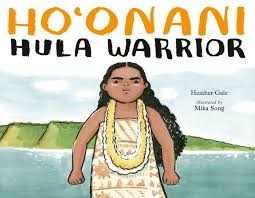


But what are boys allowed to do that girls are not, and vice versa? is a question this story can inspire.* Ho’onani’s disinterest in dedicating herself to wahine-only things reads like a rejection. And it’s mystifying: “’Why do you always have to reject wahine things?’ Kana said” hyperbolically. Ho’onani’s pursuit of “boyish” things is a source of embarrassment. Kana expresses concern with Ho’onani being loud and out-performing the boys (e.g. “Ho’onani Kamai did not see herself as wahine, ‘girl.’ Or think she was a kāne, ‘boy.’ She preferred just Ho’onani.” And most everyone seemed happy with her being the way she is in this story.* A significant exception is her elder sister Kana.

Ages 4-9įrom the very first, Ho’onani declares the way she wants to be move about in the world.


 0 kommentar(er)
0 kommentar(er)
